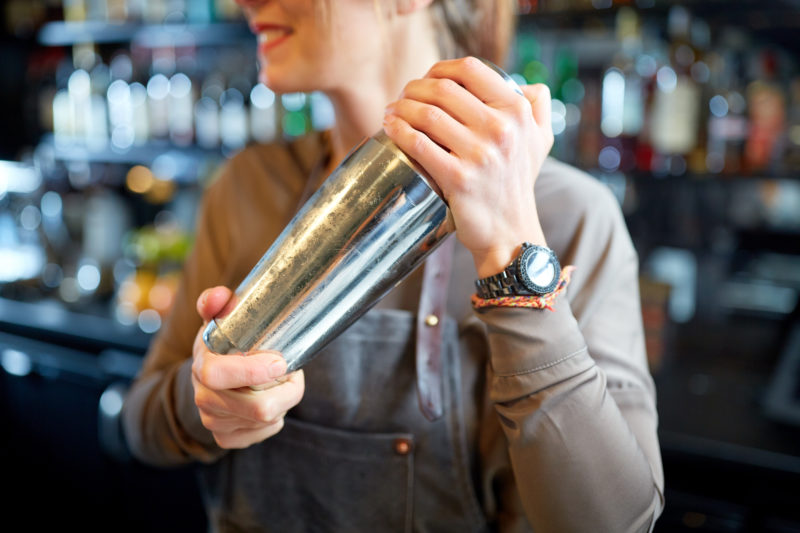


“Shaken, not stirred.” It’s a line that’s made it’s way through the annals of pop culture and drinking lore ever since Sean Connery first ordered a Martini in 1964’s Goldfinger. Funny thing is, a shaken Martini is going to be diluted, the exact opposite of how Bond says he takes it: “large and very strong and very well made.” So how does one make a Martini? And when does one shake, rather than stir, and why?

At its core, stirring a drink is a gentler method of mixing than shaking. It keeps the ingredients from becoming muddled, and keeps the mouthfeel and texture of the drink intact. With this in mind, stirring is often used with cocktails that put the actual flavors of the base spirit at the forefront, allowing it to shine through with little distraction.
Stirring a drink also ensures that the ice does not break, and the drink cools, but does not become too cold. It also prevents the drink from diluting, watering down the more pronounced and desirable spirit flavors in most stirred drinks. Less water and less aeration also means a clear and sharp look to the drink, along with the original more silky smooth texture of the involved spirit.
In stirred drinks, this also means that the size of the ice comes into play. Smaller cubes will melt quicker, larger ones will go slower. It all depends on how much you want the flavor to change over time and if you want a change of pace from the same ice in the glass over and over. Or, in the case of the martini, no ice whatsoever.
Some examples of stirred cocktails include:

A shaken drink will act in direct contrast to a stirred one in almost literally every facet of creation. Where stirring keeps ice from breaking up and over-cooling the drink, shaking violently cracks off bits of ice to make the drink nice and cold. This also has the effect of watering down the cocktail, lessening the bite and flavor of the base spirit so that it can mix well with other added ingredients.
Shaking is especially important if any strong flavors or heavy ingredients are going into the mix along with the spirit. Stirring a heavy drink will likely leave the flavors improperly blended and make for an inconsistent cocktail. One sip may be nothing but fruit—or, Heaven forbid, egg white—while another may be nothing but spirit, defeating the purpose of the mixed drink. A decent shake properly binds all the ingredients together and makes for a consistent, perfect flavor. (And time spent shaking is important depending on the drink—some take over ten minutes.)
Some examples of shaken cocktails include:
There are very few, if any, hard and fast infallible rules of bartending. What a drink contains, how it’s prepared, whether it’s shaken, stirred, built in the glass, lit on fire…you get the point. All of the aforementioned pieces of bartending can be tailored to taste, style, and clientele. At the end of the day, what matters is that the patron enjoys the drink.
So shake the Manhattan, stir the Cosmo, be a rebel. Do whatever you have to do to make it taste great. Just keep my Martini stirred, you savages.
Schedule 15mins to chat with a product specialist
Start a FREE Trial Today! BevSpot offers full product education and account setup for all customers! No card Information needed!
